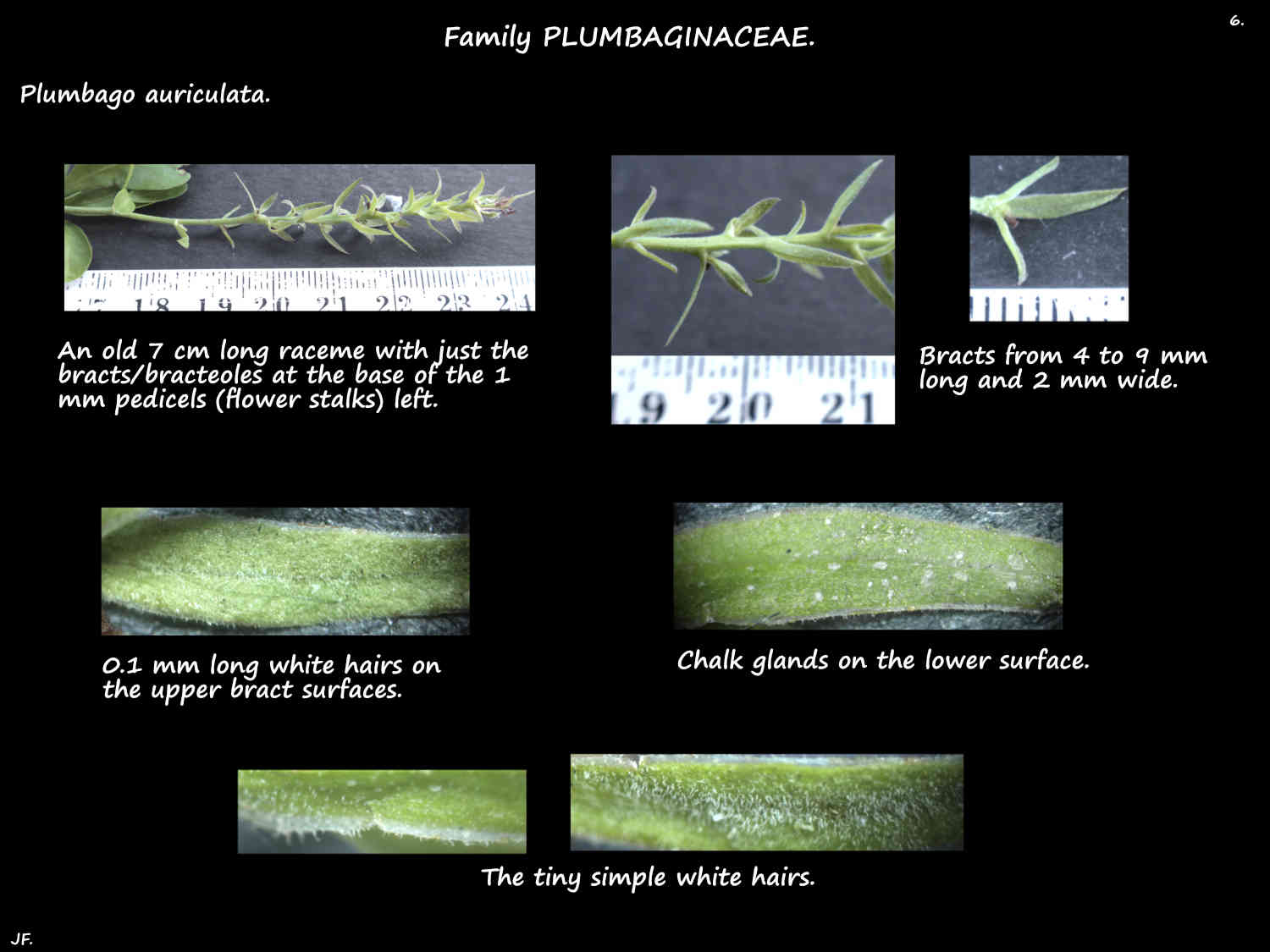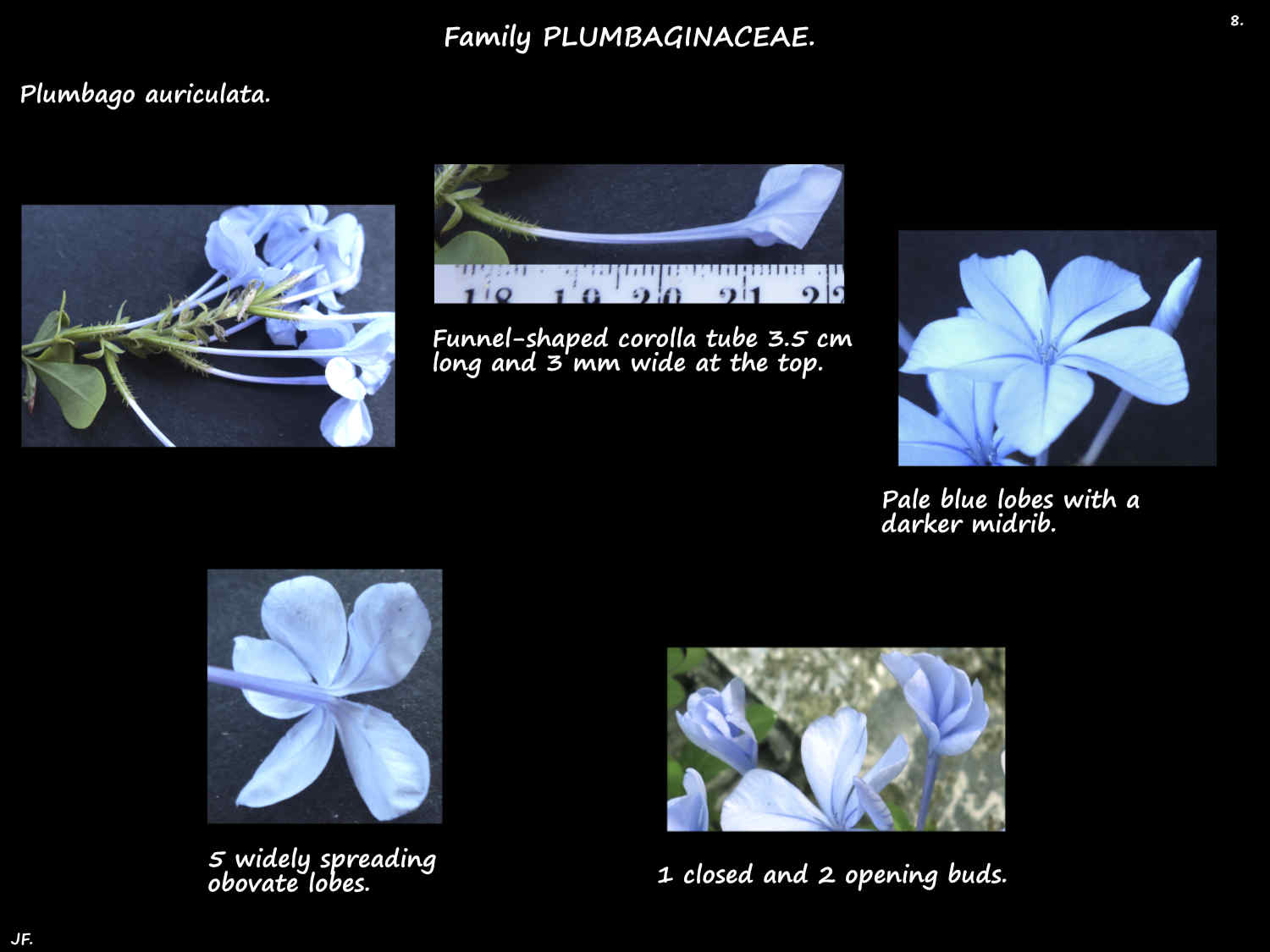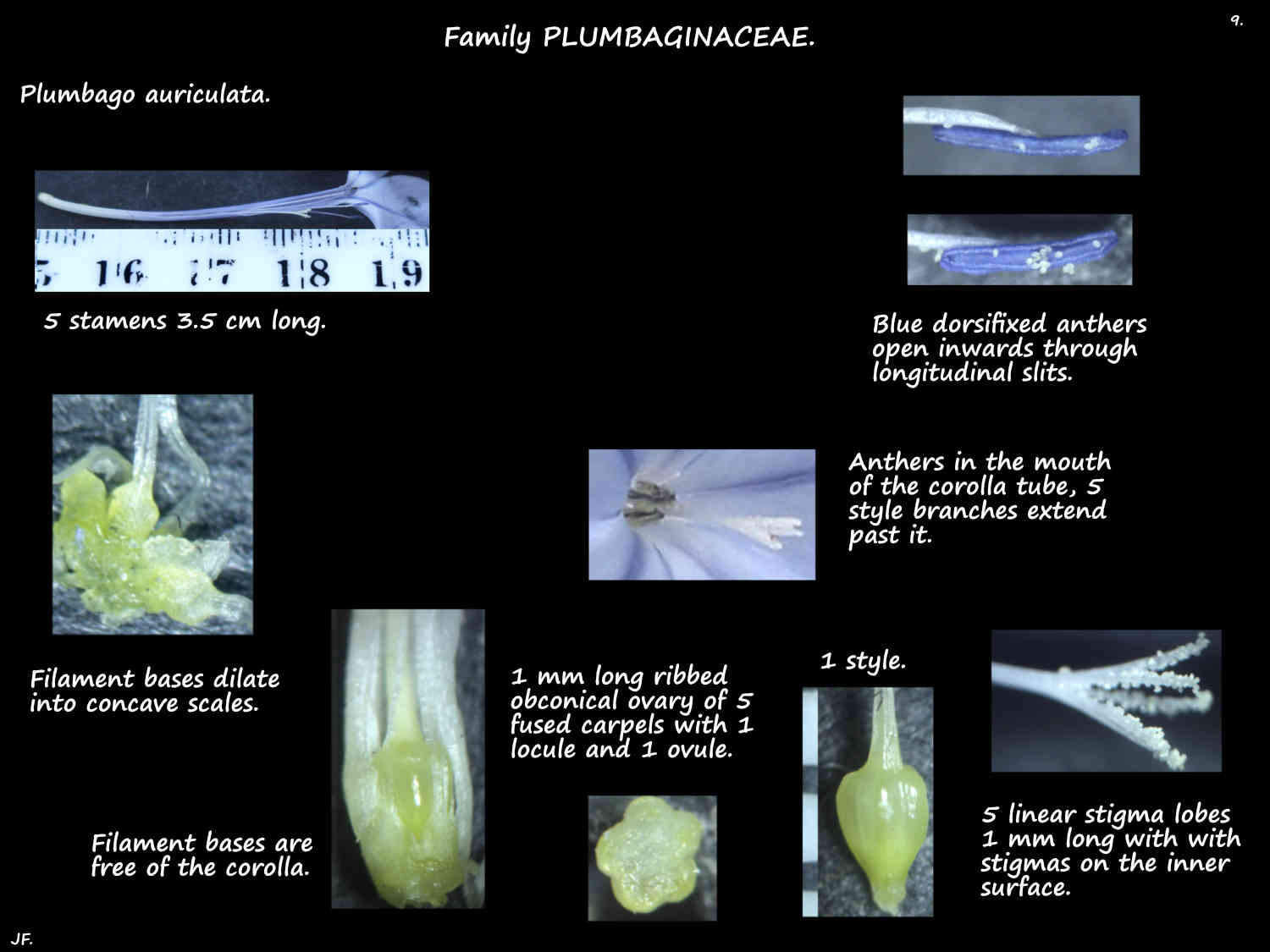Plumbago auriculata.
In Family Plumbaginaceae Blue plumbago is native to South Africa and Mozambique.
Very common here they grow as woody shrubs, scramblers or trail.
Ribbed stems are up to around 2 m long.
They sucker at the base forming dense thickets.
Pale green leaves are alternately arranged.
The base of the blade tapers to a short or no petiole which clasps the stem.
There may be a small lobe or auricle at the base which is fused to the stem.
The elliptic, obovate or oblong blades have a mucro on the blunt tip.
Their size varies markedly from around 1 to 7 cm long and up to 3 cm wide.
Frequently there are a few small leaves in the axils of the main ones.
The lower surface has dense white chalk glands but there are no hairs.
Terminal inflorescences are a spike up to 10 cm long.
They are racemes with the lower flowers opening first.
The peduncle and main axis have dense simple white hairs around a tenth of a mm long.
Each flower is on a pedicel around 1 mm long with bracts/bracteoles at the base.
The bracts, up to around 8 mm long and 2 mm wide have a pointed tip.
They have tiny hairs like the peduncle and axis.
The tubular calyx, just over 1 cm long has 5 pointed teeth only 1 mm long.
The tissue between the 5 green ribs is thin and white.
On the upper half to two thirds of the ribs are glands on 1 mm long hairs.
There are also scattered tiny white hairs.
The slender funnel-shaped corolla tube is around 4.5 cm long and 3 mm wide at the top.
The 5 widely spreading obovate lobes are around 1.3 cm long.
The pale blue corolla lobes have a darker blue midrib.
Plumbageo auriculata ‘Alba’ is a white form that is occasionally seen.
The cultivar Plumbago auriculata ‘Royal Cape’ has deeper blue flowers.
The 5 stamens, free of the corolla extend to the top of the tube.
The bases of the slender white filaments widen to form concave scales.
The blue dorsifixed anthers open through longitudinal slits.
The superior ovary, of 5 fused carpels has 1 locule and 1 ovule with basal placentation.
The style has 5 short branches with linear stigmas on their inner surface.
The fruit are 5-angled slender ovoid membranous capsules under 1 cm long.
They are covered in sticky hairs and the calyx is attached.
The single dark brown to black slightly flattened seed is 5-angled.
J.F.















